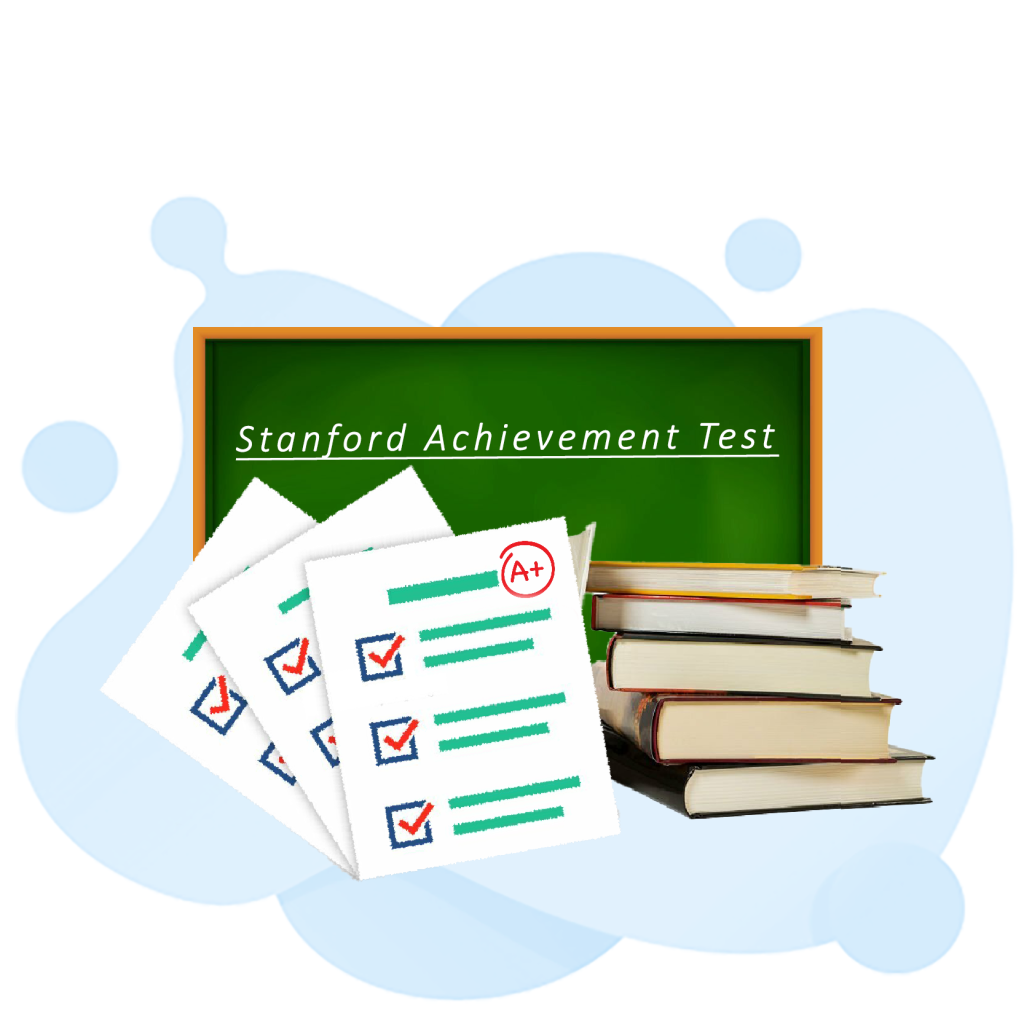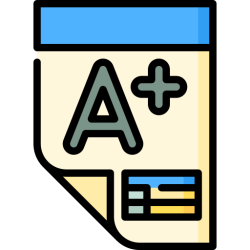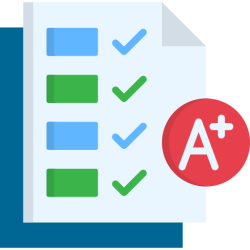Stanford Achievement Test Practice 2023

The Stanford Achievement Test, or SAT, is a standardized exam used to evaluate a student’s academic performance and progress. However, it is essential to recognize that test scores are not the sole indicator of intelligence or future success. Rather than fixating on grades or rankings, educators should focus on cultivating a love for learning and developing critical thinking skills in students.
Free Stanford Achievement Practice Test Online
Stanford Achievement Test Scores
Stanford Achievement Test (SAT) scores have long been considered a benchmark of academic achievement. These standardized tests are designed to assess students’ knowledge and skills in various subject areas, including math, reading, and language arts. While some argue that SAT scores are an accurate measure of a student’s abilities and potential, others question their validity and ability to truly capture a student’s intelligence.
One key concern with SAT scores is the pressure they place on students to perform well. The emphasis on high test scores can create undue stress and anxiety among students, potentially leading to burnout or even mental health issues. Moreover, critics argue that these tests do not provide a comprehensive view of a student’s strengths or talents beyond what can be measured by multiple-choice questions.
Another criticism of Stanford Achievement Test scores centers around their potential bias against certain groups of students. Some argue that the tests may be culturally biased, favoring those from more affluent backgrounds or specific ethnicities. Such biases can lead to disparities in test performance between different groups, which further widens existing educational inequalities.
In order for Stanford Achievement Test scores to serve as meaningful assessments of student achievement, it is crucial to consider these concerns and explore alternative approaches that promote inclusivity and holistic evaluation methods. By combining standardized testing with other measures such as project-based assessments or portfolios, educators can gain a more comprehensive understanding of a student’s abilities and potential for success.
Stanford Achievement Test Online
If you’re a parent or educator looking for an efficient and reliable way to assess students’ academic abilities, then the Stanford Achievement Test Online (SAT-10) is a tool worth considering. Developed by leading educational researchers at Stanford University, this online assessment provides valuable insights into students’ knowledge and skills across various subjects like reading, math, science, social studies, and language arts. Unlike traditional paper-based tests, the SAT-10 offers several advantages such as immediate scoring and reporting, adaptive testing capabilities that adjust difficulty level based on student performance, and the flexibility to administer the test remotely.
One of the notable features of the SAT-10 is its ability to provide detailed analysis of each student’s performance. The instant scoring system allows parents and educators to quickly identify areas where a student may need additional support or enrichment. Additionally, with adaptive testing capabilities built into the online platform, students are presented with questions that match their skill levels accurately. This not only eliminates potential boredom from simpler questions but also prevents frustration from overly challenging ones.
Furthermore, administering the SAT-10 online enables access for remote learning situations. In today’s digital age where traditional classroom settings are evolving rapidly due to various factors like technology advancements and global pandemics such as COVID-19; an online assessment like SAT-10 ensures continuity in tracking students’ progress regardless of physical location. Moreover, it saves time typically spent on hand-scoring large volumes of answer sheets manually.
In summary, the Stanford Achievement Test Online offers a comprehensive assessment solution that embraces the needs of modern education. Its adaptive format ensures that students are appropriately challenged and allows for accurate measurement of their academic abilities. The online administration provides flexibility for remote learning, allowing students to be assessed from anywhere in the world. This is especially crucial during times of crisis like the current COVID-19 pandemic, where traditional classroom settings may not be possible.

Stanford Achievement Test Series
The Stanford Achievement Test Series is a widely recognized standardized test that assesses students’ academic performance and achievement. With its comprehensive content coverage and rigorous assessment measures, the test provides valuable insights into students’ strengths and areas for improvement.
One unique feature of the Stanford Achievement Test Series is its adaptability to different grade levels and subjects. Whether it’s assessing knowledge in math, reading, science, social studies, or other subjects, this test ensures a thorough evaluation of each student’s abilities across multiple disciplines. This adaptability allows educators to gain a holistic understanding of their students’ academic proficiency.
Furthermore, the Stanford Achievement Test Series goes beyond just measuring knowledge; it also evaluates critical thinking skills and problem-solving abilities. By including questions that require analysis and application rather than simple recall, this assessment promotes higher-order thinking skills among students. Such an approach not only helps educators identify high-achieving individuals but also serves as an opportunity to encourage growth mindset development throughout the testing process.
In conclusion, the Stanford Achievement Test Series is more than just an exam; it serves as a powerful tool for evaluating students’ academic performance while nurturing their critical thinking skills. Its adaptability to different subject areas makes it highly effective for providing comprehensive feedback on individual strengths and weaknesses. By incorporating this test into educational practices, schools can gain meaningful insights into students’ learning progress while fostering intellectual growth and development.
Stanford Achievement Test Prep
It’s that time of year again when students across the country are preparing for the Stanford Achievement Test. This standardized test is administered to measure a student’s knowledge and understanding in various subject areas, including reading, math, language arts, science, and social studies. While this test can be daunting for many students, there are several strategies and resources available to help them excel.

One key strategy for success on the Stanford Achievement Test is familiarizing oneself with the format and content of the exam. Students should take advantage of practice tests and study guides that mirror the actual test questions. By becoming familiar with the types of questions asked and the way they are presented, students can develop valuable test-taking skills such as time management and effective guessing.
In addition to individual preparation, working with a tutor or joining a study group can also prove beneficial. Tutors can provide personalized instruction tailored to each student’s needs and weaknesses. Study groups offer opportunities for collaboration and peer learning, allowing students to benefit from different perspectives and approaches to problem-solving.
Ultimately, while preparing for the Stanford Achievement Test may seem overwhelming at first glance, breaking it down into manageable steps can make it more approachable. By utilizing practice materials, seeking additional support through tutoring or study groups, students can build confidence in their abilities and increase their chances of success on this important assessment tool.
Stanford Achievement Test Results
The release of Stanford Achievement Test results is always an eagerly awaited moment for educators, parents, and students alike. These test scores provide valuable insights into a student’s academic performance and serve as benchmarks for measuring their progress. Beyond just numerical values, these results offer a deeper understanding of strengths and areas requiring improvement, allowing educators to tailor instruction more effectively.
One fascinating aspect of Stanford Achievement Test results is the potential for identifying patterns and trends across different groups of students. These scores can uncover disparities in performance based on gender, socioeconomic background, or other factors, shedding light on any existing achievement gaps. This information is crucial in guiding efforts towards fostering an inclusive education system that provides equal opportunities for all students to thrive academically.
Another intriguing facet of analyzing Stanford Achievement Test results lies in exploring how external factors impact student performance. Factors like school funding resources, teacher-student ratios, curriculum choices, and community support systems can significantly influence test outcomes. By delving into these connections and studying the data from multiple perspectives, educators can gain valuable insights to make informed decisions about educational policies and interventions aimed at enhancing student success.
Overall, the release of Stanford Achievement Test results offers a comprehensive view of a student’s academic journey while providing valuable feedback for educators to enhance classroom instruction. Furthermore, it serves as a means to identify inequalities within the education system and prompt collective efforts toward creating equitable learning environments for all students.

Stanford Achievement Test Study Guide
The Stanford Achievement Test (SAT) is a widely recognized standardized test used to assess student performance and academic achievement. As with any standardized test, preparation is key to success. A comprehensive study guide can give students the tools they need to excel on the SAT.
One often overlooked aspect of test preparation is time management. A study guide should not only provide detailed content review but also teach students effective strategies for utilizing their time efficiently during the exam. By practicing timed sections and learning how to pace themselves, students will gain confidence and reduce anxiety on the day of the test.
Furthermore, a good SAT study guide should emphasize critical thinking skills rather than simply regurgitating facts. Understanding how to analyze and evaluate information is essential for mastering both the verbal reasoning and math sections of the SAT. Encouraging students to think critically about different problem-solving approaches will not only improve their scores but also foster intellectual growth.
By providing comprehensive content review, effective time management strategies, and an emphasis on critical thinking skills, a well-crafted Stanford Achievement Test study guide can help students reach their full potential on this important exam.
Cost of the Stanford Achievement Test
The cost of the Stanford Achievement Test has been a topic of debate among educators and parents alike. While some argue that the benefits of the test outweigh its expenses, others question whether it is worth investing in this standardized assessment. The price of the test varies depending on factors such as grade level and testing format, which can make it difficult to estimate overall costs.

Critics of the Stanford Achievement Test argue that the financial burden placed on schools and districts could be better spent on other educational resources. They question whether the high price tag is justified, especially considering that there are alternative forms of assessment available. Additionally, some parents express concerns about the pressure that standardized tests put on their children and believe that these funds could be better allocated towards a more well-rounded education.
On the other hand, supporters contend that the Stanford Achievement Test provides invaluable data for educators to assess student performance and tailor instruction accordingly. They argue that this data-driven approach can lead to improved academic outcomes for students who may require additional support or enrichment opportunities. Moreover, they emphasize that investing in quality assessments like SAT can help identify achievement gaps among different student groups and enable targeted interventions to bridge those gaps effectively.
While there are valid arguments from both sides regarding the cost of administering the Stanford Achievement Test, it is essential to consider individual contexts before making a final judgment. Factors such as school budgets, resource availability, and state mandates need to be taken into account when evaluating whether investing in this assessment is a worthwhile endeavor. Ultimately, striking a balance between accurate evaluation methods and financial feasibility is crucial for ensuring equitable education opportunities for all students.
Stanford Achievement Test Math
The Stanford Achievement Test (SAT) Math is an important assessment tool that measures students’ mathematical skills and knowledge. It offers a comprehensive evaluation of students’ math abilities, allowing educators to identify areas of strengths and weaknesses. Unlike traditional exams, the SAT Math focuses on problem-solving, critical thinking, and application of mathematical concepts rather than memorization or regurgitation of formulas.
The SAT Math not only provides a snapshot of a student’s current mathematical proficiency but also helps track their academic progress over time. This assessment enables teachers to tailor instruction to meet individual needs, ensuring that students receive targeted support in areas where they may be struggling. Moreover, by analyzing the data gathered from these tests, educators can make informed decisions about curriculum development and instructional strategies to enhance overall math education.
One valuable aspect of the SAT Math is that it promotes deeper learning rather than surface-level understanding. By presenting real-world scenarios and challenging problems that require reasoning skills, this test encourages students to apply math concepts in meaningful ways. It cultivates critical thinking skills as they grapple with complex problems and strengthens their ability to think analytically – essential skills for success in higher education and future careers requiring quantitative reasoning.
In summary, the Stanford Achievement Test Math holds tremendous value as an assessment tool for measuring students’ mathematical proficiency. Not only does it help identify areas for improvement but also supports tailored instruction based on individual needs. By fostering deep learning through problem-solving opportunities, this test equips students with vital analytical and critical-thinking skills necessary for their academic and professional development. Moreover, the Stanford Achievement Test Math serves as a benchmark for educators and school administrators to gauge the effectiveness of their instructional methods and curriculum.